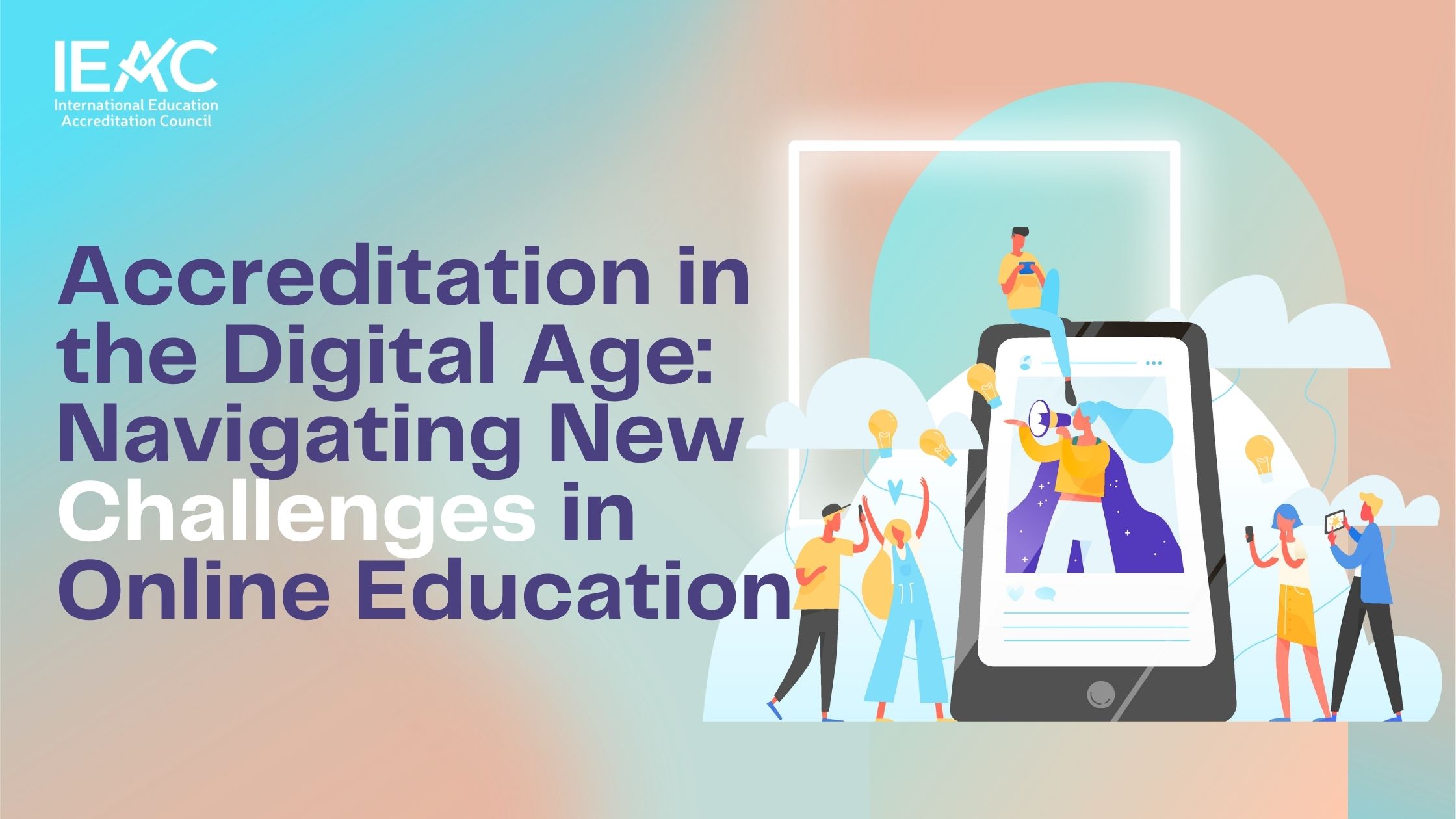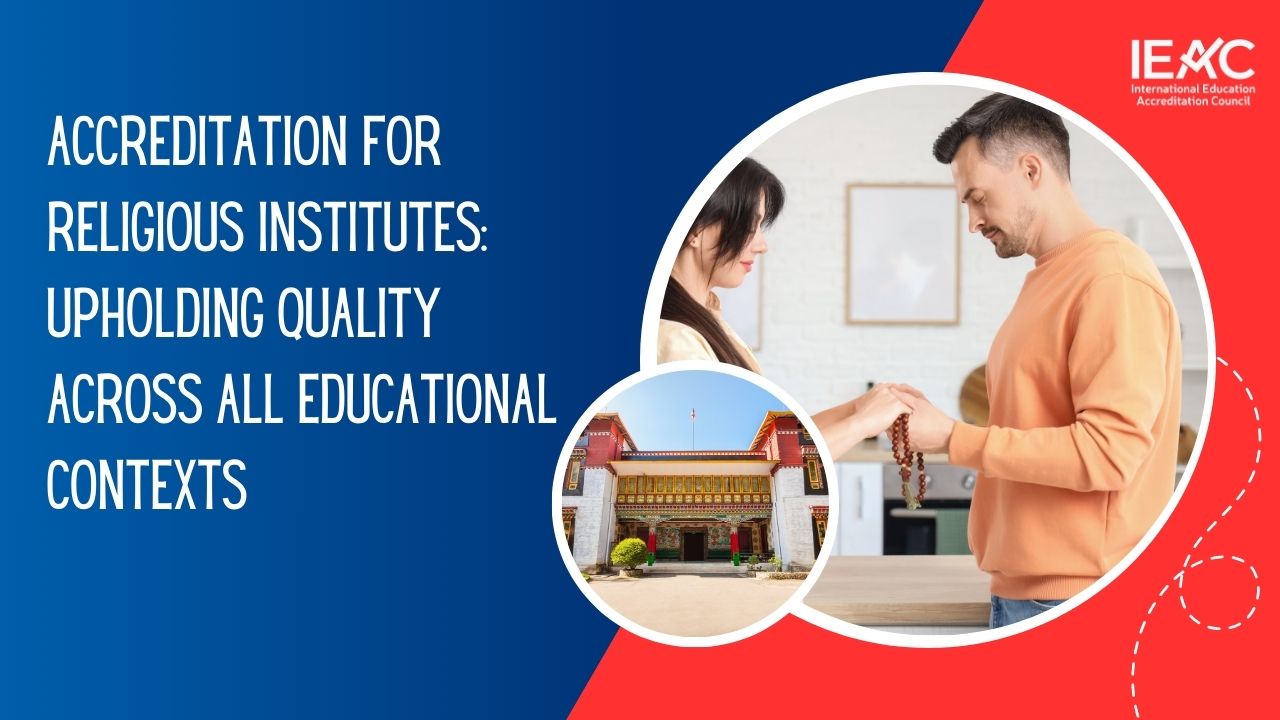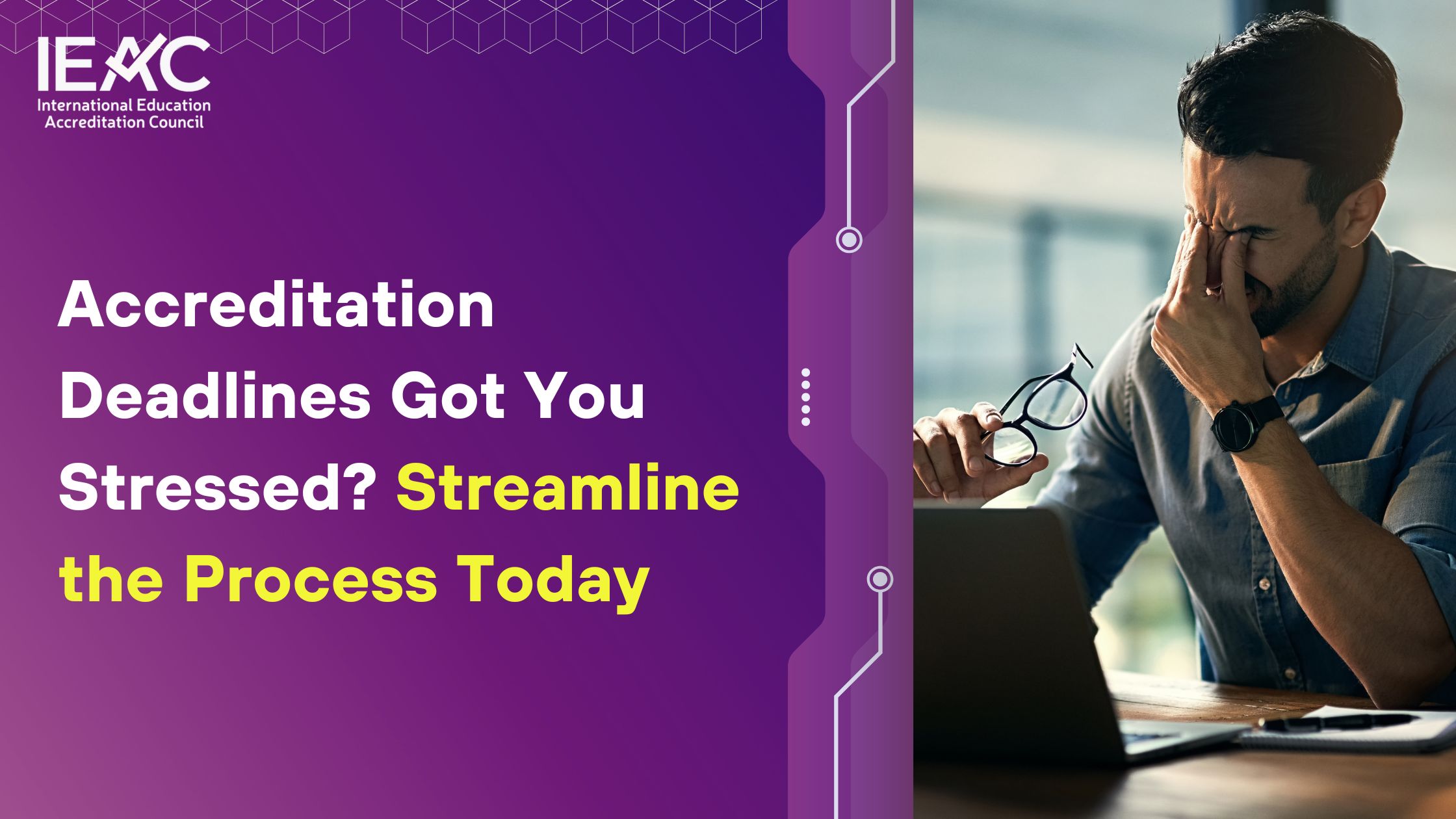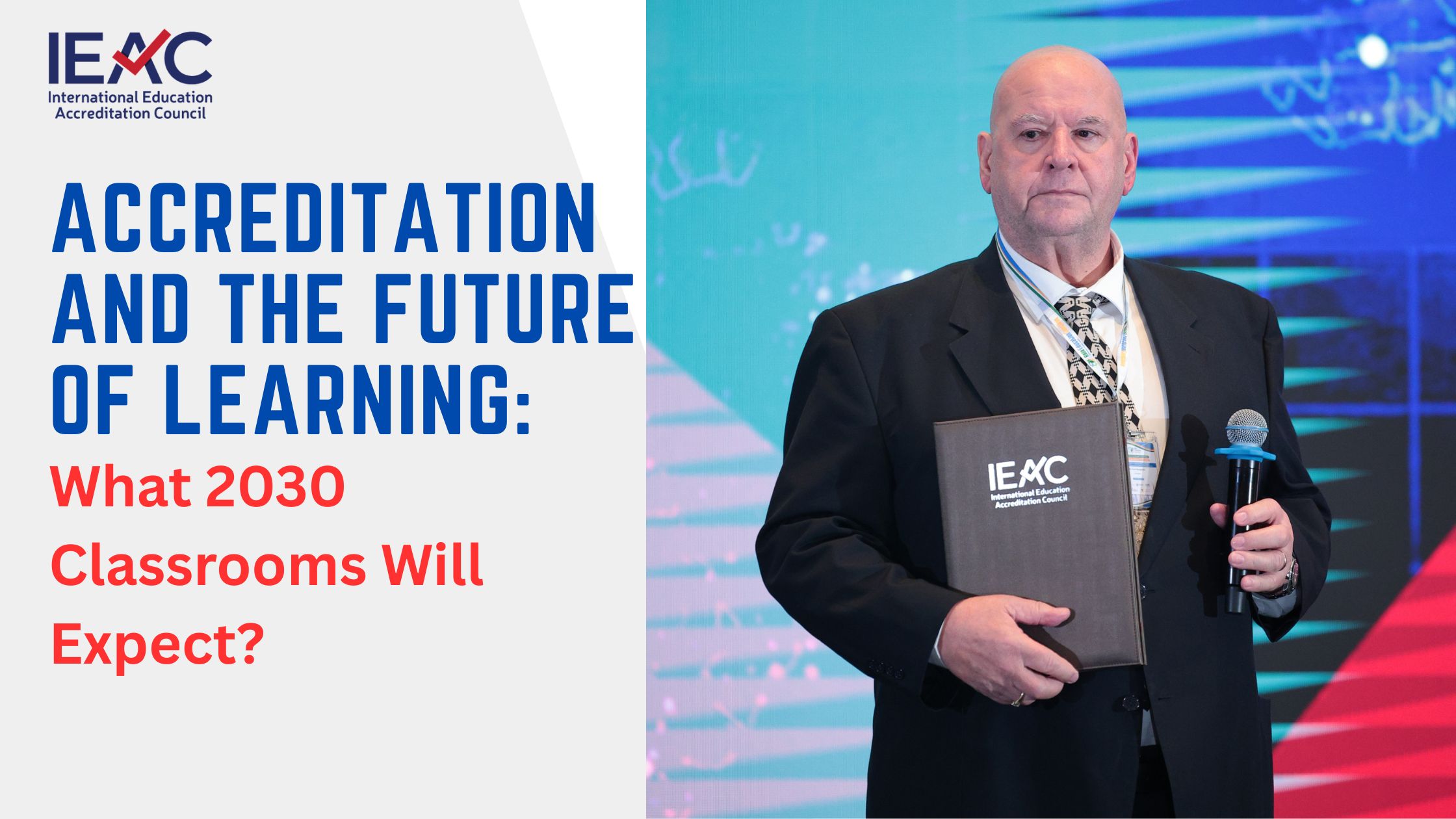- Home
- About IEAC
- Accreditation
- University Accreditation
- College Accreditation
- Online Institution Accreditation
- School Accreditation
- University Recruitment Agency Accreditation
- Programmatic Accreditation
- Teacher/ Lecturer Accreditation
- Religious Institutes Accreditation
- Affiliate Accreditation
- Research Accreditation Candidacy Accreditation
- IEAC Membership
- Institutions Accredited
- Accreditation Process
- Contact Us Webinar Apply Now
Blog
Accreditation in the Digital Age - Navigating New Challenges in Online Education
Lorem ipsum dolor sit amet, consectetur adipiscing elit, sed do eiusmod tempor incididunt ut labore et dolore magna aliqua. Quis ipsum suspendisse ultrices gravida. Risus commodo viverra maecenas accumsan lacus vel facilisis.

Accreditation in the Digital Age - Navigating New Challenges in Online Education
Accreditation has always been a marker of educational quality and institutional reliability. However, in today’s hyper-digital world, where online learning is thriving, AI is shaping pedagogy, and cross-border education is becoming the standard, traditional accreditation frameworks are being pushed to their limits.
According to UNESCO, over 220 million learners were enrolled in online education programs by 2024, sparking an urgent need for changed accreditation models that can keep pace with innovation, scalability, and global standards.
Let’s dive into how the digital revolution is redefining accreditation and the new challenges it brings for both institutions and students.
1. The Growth of Online-Only Institutions: Harder to Monitor, Easier to Market
The explosion of fully online universities and programs has distorted the lines between credible education and flashy digital marketing. In the absence of physical campuses, assessing infrastructure, faculty qualifications, learner support, and academic rigor becomes more complex.
Challenge: Accreditation bodies must now develop robust virtual inspection protocols and digital evaluation methods that accurately assess the quality of online-only offerings. Institutions, too, must prove they’re more than just a website, they need to prove tangible student success, transparent policies, and secure learning environments.
2. Globalization vs. Local Standards: Accreditation Across Borders
The internet has made education global, but accreditation is still mostly regional. A university accredited in one country may not be recognized in another. Students are frequently misled by international-sounding approvals that hold little actual value.
Challenge: There is a growing demand for internationally recognized quality benchmarks like IEAC and mutual recognition agreements between accreditation agencies. Without a harmonized framework, students risk investing in programs that are not recognized by employers or universities in their home country.
3. AI in Education: Who Accredits the Algorithm?
From AI tutors to automated grading systems, artificial intelligence is transforming learning. But who ensures that these tools are fair, inclusive, and pedagogically sound?
Challenge: Accrediting bodies must evolve to evaluate AI-based learning tools, their ethical suggestions, and their impact on learning outcomes. Traditional rubrics don’t cover algorithmic bias, data privacy, or adaptive learning metrics, yet these are now serious to quality education.
4. Verifying Authenticity in a World of Deepfakes and Bots
The digital era also comes with a darker side—plagiarism, diploma mills, falsified accreditation claims, and even deepfake faculty credentials.
Challenge: Accrediting agencies must now embrace blockchain-based credentialing, biometric proctoring, and real-time verification systems to fight fraud. Students and employers also need digital tools to easily verify accreditation status before enrolling or hiring.
5. Student-Centric Accreditation: The Learner as a Stakeholder
In the past, accreditation largely focused on institutional inputs, faculty ratios, curriculum hours, etc. Today’s students demand more: career readiness, flexibility, mental health support, and real-world skills.
Challenge: New-age accreditation must shift toward learner outcomes, tracking everything from student satisfaction and employability to alumni impact and digital literacy. Accrediting bodies need to include student voices in their evaluation and reform processes.
6. The Need for Real-Time, Continuous Quality Assurance
Gone are the days when accreditation was renewed every 5-10 years after static audits. In the digital age, courses evolve monthly, tools change weekly, and student expectations shift daily.
Challenge: Accrediting institutions must move toward real-time or continuous quality monitoring, leveraging learning analytics, dynamic dashboards, and automated risk alerts to stay ahead of performance dips and compliance lapses.
7. Building Trust in Digital Badges and Microcredentials
As microlearning gains momentum, learners now collect digital badges and nano-degrees. But how do we know which ones are truly accredited?
Challenge: There’s a need for standardized accreditation of microcredentials and short-term certifications. Without misunderstanding, the market risks becoming oversaturated with flashy yet meaningless badges.
Accreditation Must Evolve to Stay Relevant
The digital age has expanded access to education but it has also raised new questions about credibility, transparency, and quality. As online learning becomes mainstream, accreditation must go beyond paperwork and site visits. It must embrace innovation without compromising standards.
Students, educators, institutions, and accreditation bodies must collaborate to build a system of trust that thrives in a virtual-first world. Because in 2025 and beyond, accreditation isn’t just about meeting standards, it’s about setting them.



.jpg)


